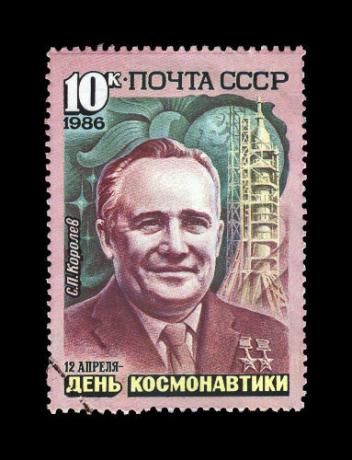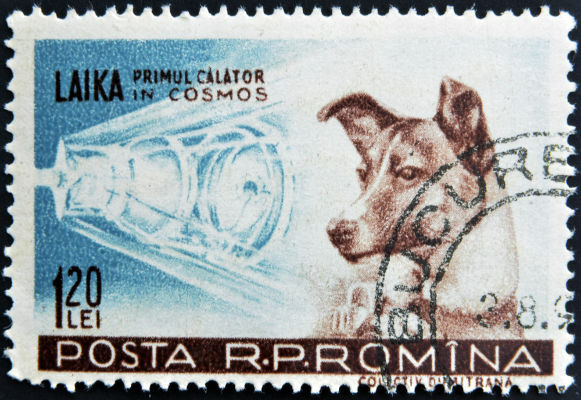Sputnik it was the program name, developed by the Soviets, responsible for sending the first artificial satellite, named Sputnik 1, to Earth orbit in 1957. This event was the result of years of studies carried out by scientists in the country and a Historic mark, because it is considered the event that started the space race.
Also access: Apollo 11, the expedition that took man to the moon
Context
The launch of Sputnik 1, the first artificial satellite produced by the Soviet program, took place in October 4, 1957 and started the space race. This event was one of the chapters that marked the Cold War, the political-ideological dispute fought by the Americans and the Soviets from 1947 onwards.
During that war, Americans and Soviets fought for the world hegemony, and this dispute resulted in the polarization of the world and the emergence of large support blocs for each of these countries. The result of this polarization and the quest for hegemony was that Americans and Soviets competed for dominance in different areas.
The dispute for military power was one of those areas and led Americans and Soviets to invest in the development of missiles and more powerful weapons, such as nuclear bombs and thermonuclear. The production of new missiles and rockets also ended up having repercussions on technological investment for space exploration.
know more: Atomic bombs in Hiroshima and Nagasaki
The Soviets, as well as the Americans, were exposed to the details of a German program that resulted in the production of the first ballistic missile in history and they used this to develop their own Software. This led to major advances in the field of missile and rocket production after the Second World War.

Sergei Korolev was the scientist responsible for the project that led the Soviets to launch the first satellite.
In the case of the Soviets, most of these advances were made by the Ukrainian scientist sergeiPavlovichKorolev, which, from 1946, was dedicated to programs that produced nuclear missiles and space rockets. From the research conducted by Korolev, the Semiorka, a rocket that could carry a weight of up to 1300 kg.
Semiorka has been approved to launch the first soviet satellite, in 1956, by the Academy of Sciences of the Soviet Union. However, this event only happened, primarily, because of Korolev's scientific contribution to the development of both the satellite. how much of the rocket and, mainly, because he was responsible for convincing the Soviet government of the importance of investing in this program.
Korolev used a satellite study carried out by MikhailTikhonravov and he managed to convince the highest echelons of the Soviet government that investing in satellite development could play a relevant role in military affairs. Furthermore, it was known to the Soviet government that the Americans were already promoting studies in the area.
Read too:Why hasn't man returned to the moon yet?
Sputnik Project
In 1952, an international project of scientists announced that 1957 would be the International Geophysical Year, with the objective that different countries of the planet join efforts in order to carry out important studies for the understanding of terrestrial phenomena. The Soviets stipulated that their satellite must be launched before the start of this milestone.
Between 1955 and 1956, the Soviets carried out a series of studies to enable the project to send the satellite to the space, and on January 30, 1956, the government approved the creation of this satellite, which, at first, was named in Object D. This project, however, suffered numerous delays, and Korolev decided to reformulate it.
Instead of launching a satellite weighing more than 1000 kg, Korolev convinced the Soviet government to launch two satellites weighing less than 100 kg, under the argument that it was necessary to send the satellite before the North Americans. Despite three initial failures, Korolev managed two successful tests and obtained authorization to release the PS-1, which was later known as Sputnik 1.
The launch of Sputnik 1 was scheduled for the day October 6, 1957, but as Korolev was afraid that the Americans would launch their satellite before the Soviets, he opted to bring the launch forward to the 4th. Sputnik 1 was launched from the base located at Tyuratam, in Kazakhstan, at 22:28 Moscow time.
Sputnik 1 had 83.6 kg, ordinary diameter of 58 cm, and was produced from an alloy of aluminum. The antennas on Sputnik 1, responsible for sending the radio signal, were 2.4 m and 2.9 m long.
Read too:Myths and truths about the arrival of man on the moon
Repercussion in the USA
The launch of Sputnik 1 was a great scientific achievement and it spawned great repercussion in the world and in the Soviet Union itself. At first, the biggest repercussion was in the United States, and public opinion turned against the President of the United States, Dwight Eisenhower, accusing him of allowing the US to be technologically overtaken by the Soviets.
The Americans intended to respond to the Soviet achievement with the launch of a project's satellite vanguard. Their first test took place on December 6, 1957 and it was a disaster as the rocket carrying the satellite exploded. It wasn't until January 1958 that the Americans managed to launch their first satellite: the Explorer 1.
After the launch of Explorer 1, the first US satellite, the US government ordered the creation of the National Aeronautics Space Administration, More known asNASA. It is this agency that has coordinated all space-related activities since 1958.
other missions

The dog Laika was the first living being to be sent into space during the Sputnik 2 mission.
In November 4, 1957, the Soviets launched the Sputnik 2, and with this they achieved a new feat: they sent the first living being in space. The Sputnik 2 weighed about 508 kg and took the bitch laika to space.
The module carrying the dog had not been designed to return to Earth, and the Soviet scientists knew that by sending her they were sentencing the bitch to death. After 10 days, Laika died as a result of overheating the structure of Sputnik 2, and this information was kept secret until the end of the Soviet Union, in 1991.
On May 15, 1958, the Sputnik 3, 1327 kg Soviet satellite. This satellite confirmed a discovery made by the Americans: the existence of a radioactive belt around the Earth known as Van Allen belt. O Sputnik 4 was launched on May 15, 1960 and inaugurated the use of a new rocket, the Vostok.
O Sputnik 5 sent two dogs (Belka and Strelka) into space on August 19, 1960. both were brought with life to Earth the next day. O Sputnik 6 sent two more dogs (Ptsyolka and Mushka) into space on December 1, 1960, but a failure led both to death.
Sputnik 7 and 8 were two probes sent to enter the orbit of Venus. The first was sent on February 4, 1961, but there was launch failed and the mission failed. The second, in turn, was launched on February 12, 1961, but the probe lost contact with the Earth after traveling millions of kilometers in space.
Sputnik 9 and 10 they sent dogs back into space again. Sputnik 9, released March 9, 1961, had in addition to the bitch Chernuska, some mice and a guinea pig. It is known that the dog returned to Earth alive. The last Sputnik mission was carried out with the Sputnik 10 spacecraft, launched on March 25 of the same year, with the dog Zvezdochka. This was recovered alive.
*Image credit: Alexey Broslavets and Shutterstock
**Image credit: nephthali and Shutterstock
***Image credit: smoke and Shutterstock
By Daniel Neves
Graduated in History

